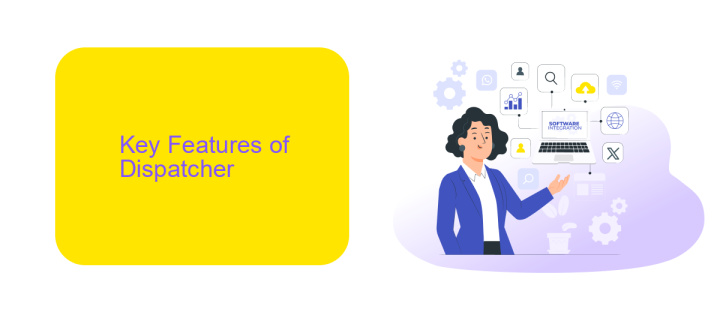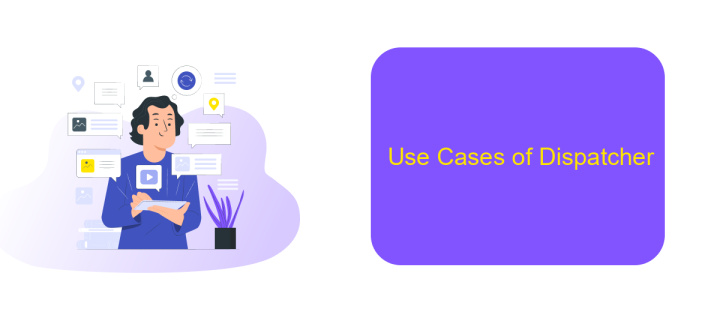What is Dispatcher in UiPath
The Dispatcher in UiPath plays a crucial role in managing and orchestrating robotic processes. It serves as a central hub that schedules and distributes tasks to various robots within an automation environment. By efficiently handling job queues and prioritizing tasks, the Dispatcher ensures optimal resource utilization and seamless execution of automated workflows, enhancing overall operational efficiency.
Introduction
In the realm of robotic process automation (RPA), UiPath stands as a leading platform that streamlines business processes. One of the critical components within UiPath is the Dispatcher, which plays a pivotal role in managing and orchestrating workflows. The Dispatcher ensures that tasks are efficiently allocated and executed, enhancing the overall productivity of automation projects.
- Automates task distribution
- Enhances workflow efficiency
- Facilitates seamless integration with other systems
Moreover, integrating UiPath with external services can significantly amplify its capabilities. For instance, ApiX-Drive is a powerful tool that simplifies the process of connecting UiPath with various applications and services. By using ApiX-Drive, organizations can effortlessly set up integrations, ensuring smooth data flow and operational harmony across different platforms. This synergy between UiPath and ApiX-Drive empowers businesses to achieve higher levels of automation and efficiency.
Key Features of Dispatcher

The Dispatcher in UiPath is a powerful component designed to enhance the efficiency of robotic process automation (RPA). One of its key features is the ability to manage and distribute tasks across multiple robots seamlessly. This ensures optimal utilization of resources and minimizes downtime, thereby improving overall productivity. Additionally, the Dispatcher can prioritize tasks based on predefined rules, ensuring that critical processes are completed first, which is crucial for maintaining business continuity.
Another significant feature of the Dispatcher is its integration capabilities. It can easily connect with various third-party services and APIs, such as ApiX-Drive, to streamline workflow automation. ApiX-Drive facilitates the integration process by providing a user-friendly interface to connect multiple applications without the need for extensive coding. This allows businesses to quickly adapt to changing requirements and integrate new tools into their existing automation framework, enhancing flexibility and scalability. Overall, the Dispatcher in UiPath is an indispensable tool for optimizing RPA operations and ensuring seamless task management.
Benefits of Dispatcher

Implementing a Dispatcher in UiPath can significantly enhance your automation workflows by streamlining task distribution and improving efficiency. The Dispatcher component plays a crucial role in breaking down large tasks into manageable units, which can then be processed concurrently, leading to faster and more reliable automation outcomes.
- Improved Task Management: Dispatchers can efficiently allocate tasks to different robots, ensuring balanced workloads and preventing bottlenecks.
- Scalability: By distributing tasks, Dispatchers make it easy to scale your automation processes, allowing you to handle increased workloads without compromising performance.
- Enhanced Monitoring: Using a Dispatcher allows for better tracking and monitoring of task statuses, making it easier to identify and resolve issues promptly.
- Seamless Integration: Tools like ApiX-Drive can be integrated with UiPath Dispatchers to automate data transfers and streamline workflows between different systems and applications.
By leveraging the capabilities of a Dispatcher in UiPath, organizations can optimize their robotic process automation (RPA) strategies. This leads to improved productivity, reduced operational costs, and a more agile response to changing business needs. Integrating services like ApiX-Drive further enhances these benefits by facilitating seamless data flow and connectivity across various platforms.
Use Cases of Dispatcher

In UiPath, a Dispatcher is a crucial component used to manage and distribute tasks efficiently within an automation process. It plays a vital role in scenarios where tasks need to be queued and processed asynchronously, ensuring that workflows run smoothly without manual intervention.
One common use case for a Dispatcher is in handling large volumes of data that need to be processed in batches. For instance, when dealing with extensive data sets from various sources, a Dispatcher can queue these tasks, allowing robots to process them sequentially or in parallel, optimizing resource utilization.
- Automating invoice processing by queuing invoices for validation and approval.
- Managing customer service requests by distributing them to available agents or bots.
- Processing orders in e-commerce by queuing them for inventory checks and shipping.
- Integrating with third-party services like ApiX-Drive to automate data transfer between different applications.
By leveraging a Dispatcher in UiPath, businesses can streamline their operations, reduce manual workload, and enhance overall efficiency. This approach not only improves task management but also ensures that critical processes are executed in a timely and organized manner.
Conclusion
In conclusion, the Dispatcher in UiPath plays a crucial role in streamlining and managing the workflow within automation processes. It efficiently handles the distribution of tasks and ensures that the right resources are allocated to the right jobs, optimizing performance and productivity. By leveraging the Dispatcher, organizations can achieve higher levels of automation and reduce manual intervention, leading to more efficient operations and cost savings.
Moreover, integrating UiPath with external services such as ApiX-Drive can further enhance the capabilities of the Dispatcher. ApiX-Drive facilitates seamless integration between various applications and services, allowing for smoother data flow and more cohesive automation processes. This integration ensures that all systems work in harmony, providing a more robust and scalable automation solution. Overall, the Dispatcher in UiPath, coupled with powerful integration tools like ApiX-Drive, can significantly elevate an organization's automation strategy.
FAQ
What is a Dispatcher in UiPath?
How does a Dispatcher differ from a Performer in UiPath?
Can a single UiPath robot act as both Dispatcher and Performer?
What are the key benefits of using a Dispatcher in UiPath?
How can I integrate UiPath with other systems for data dispatching?
Apix-Drive is a simple and efficient system connector that will help you automate routine tasks and optimize business processes. You can save time and money, direct these resources to more important purposes. Test ApiX-Drive and make sure that this tool will relieve your employees and after 5 minutes of settings your business will start working faster.

